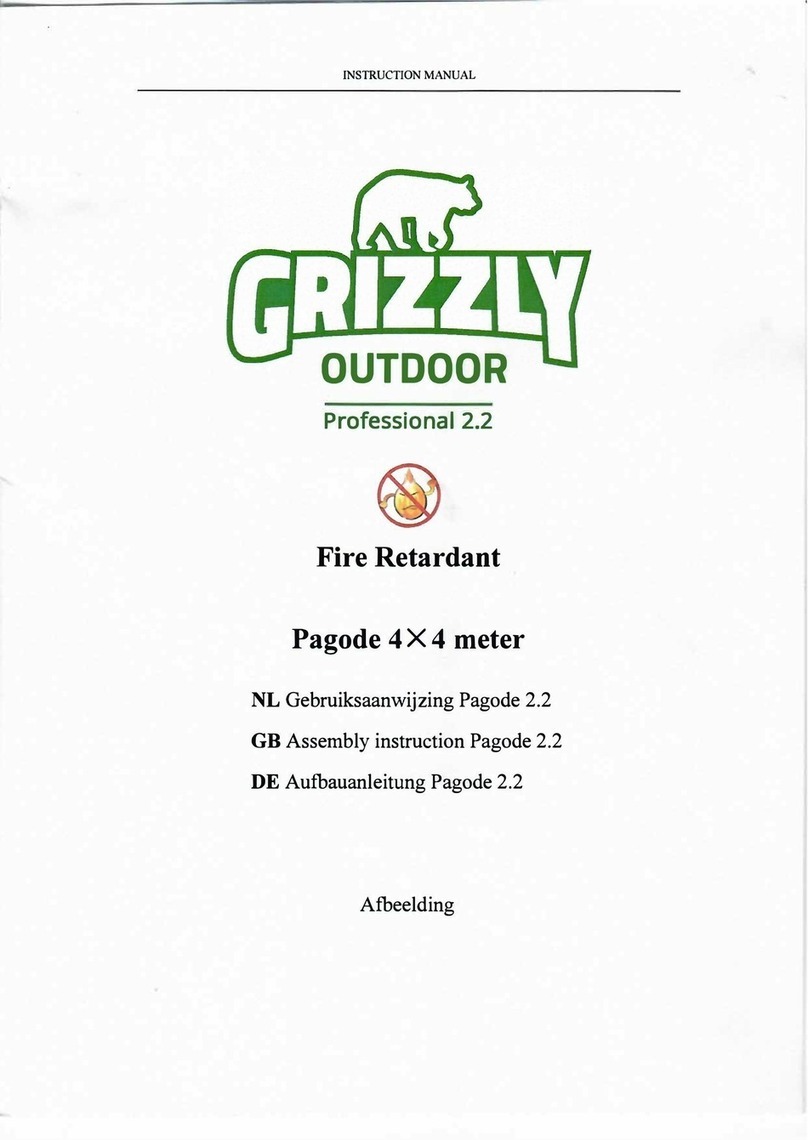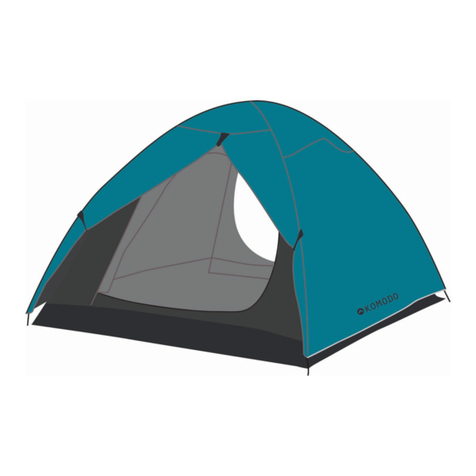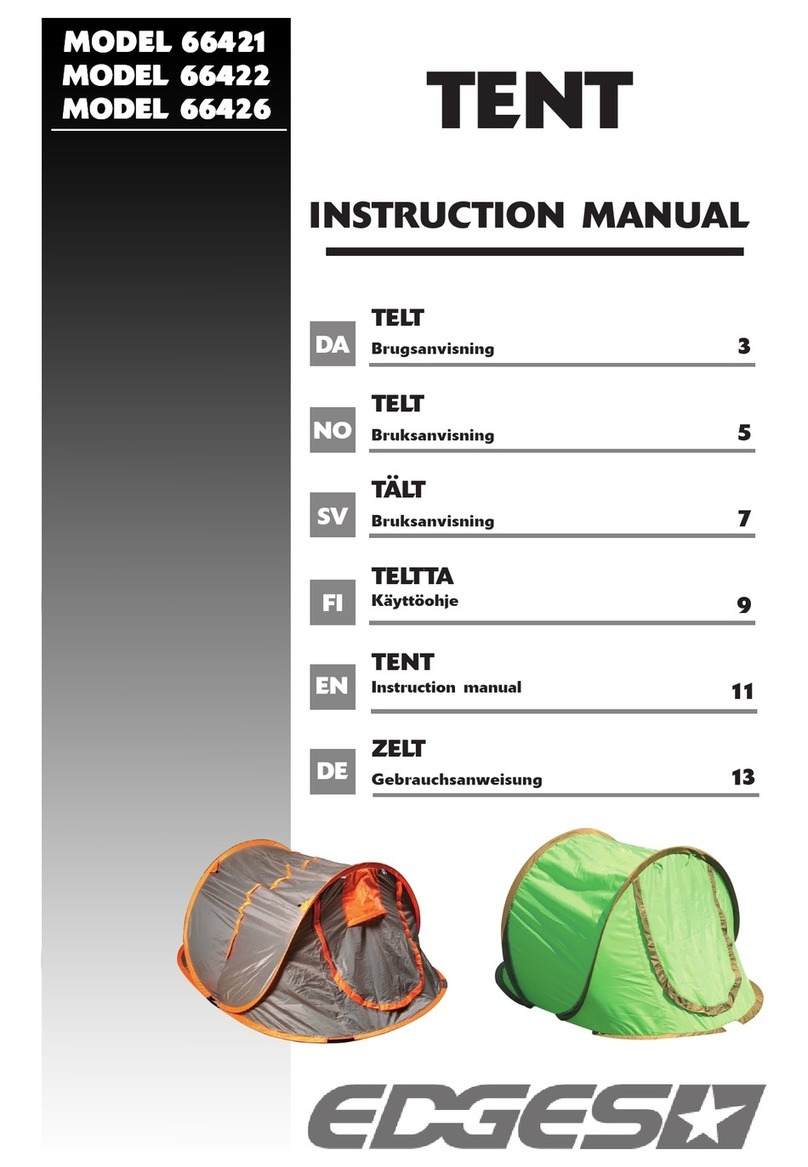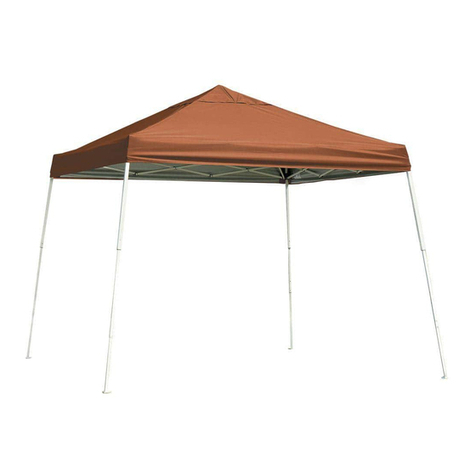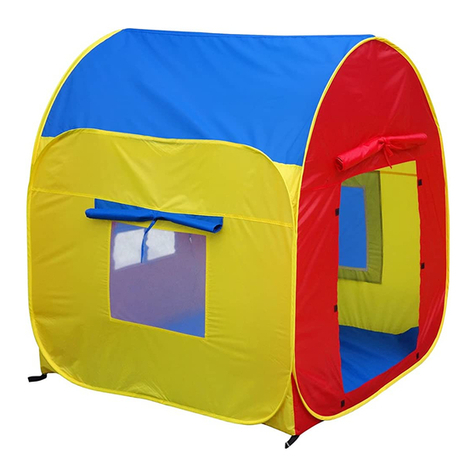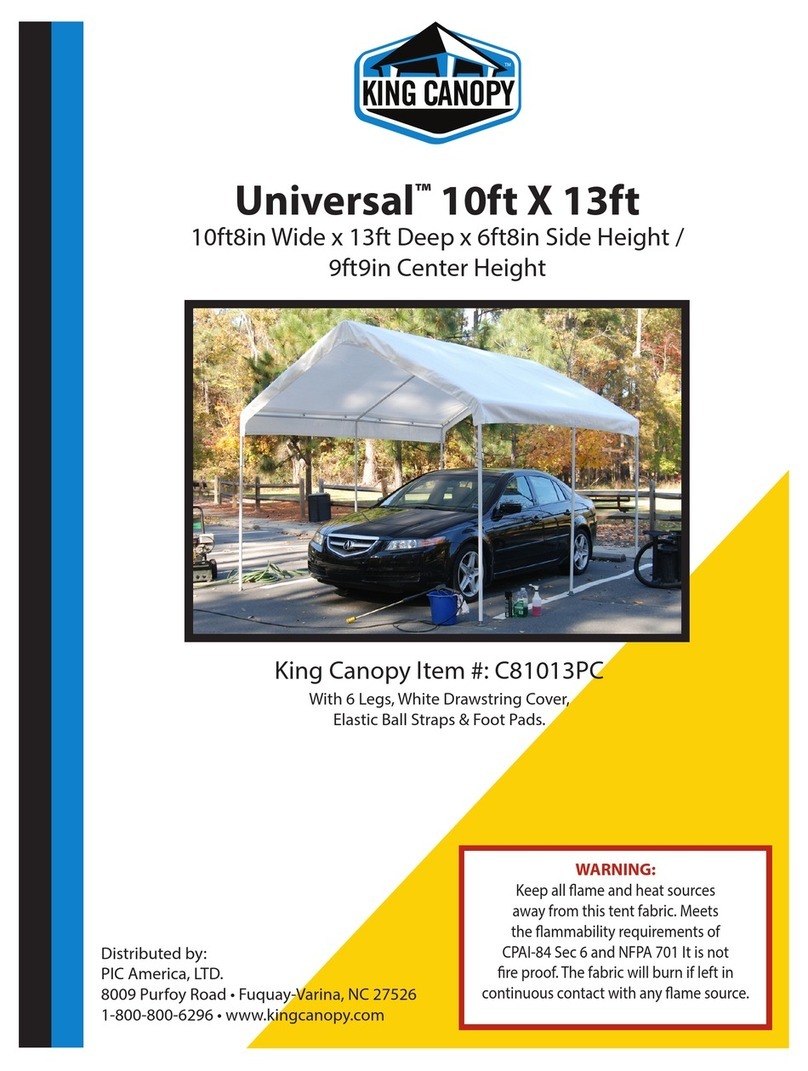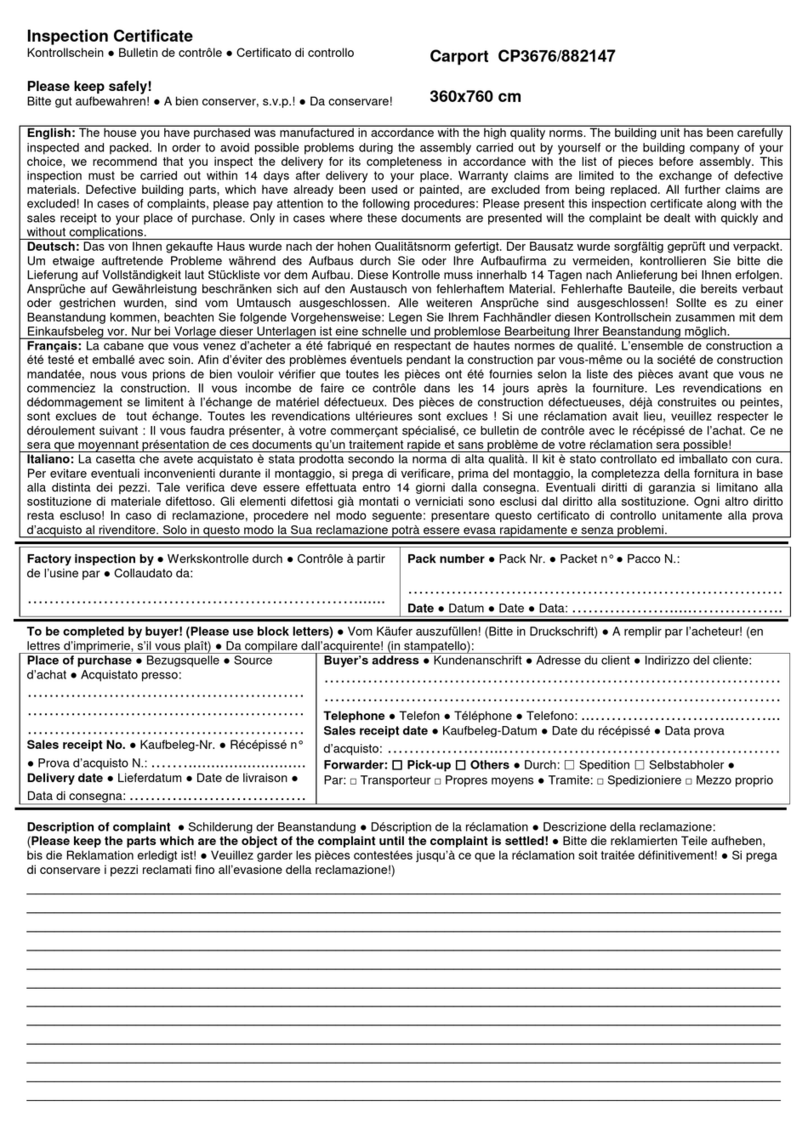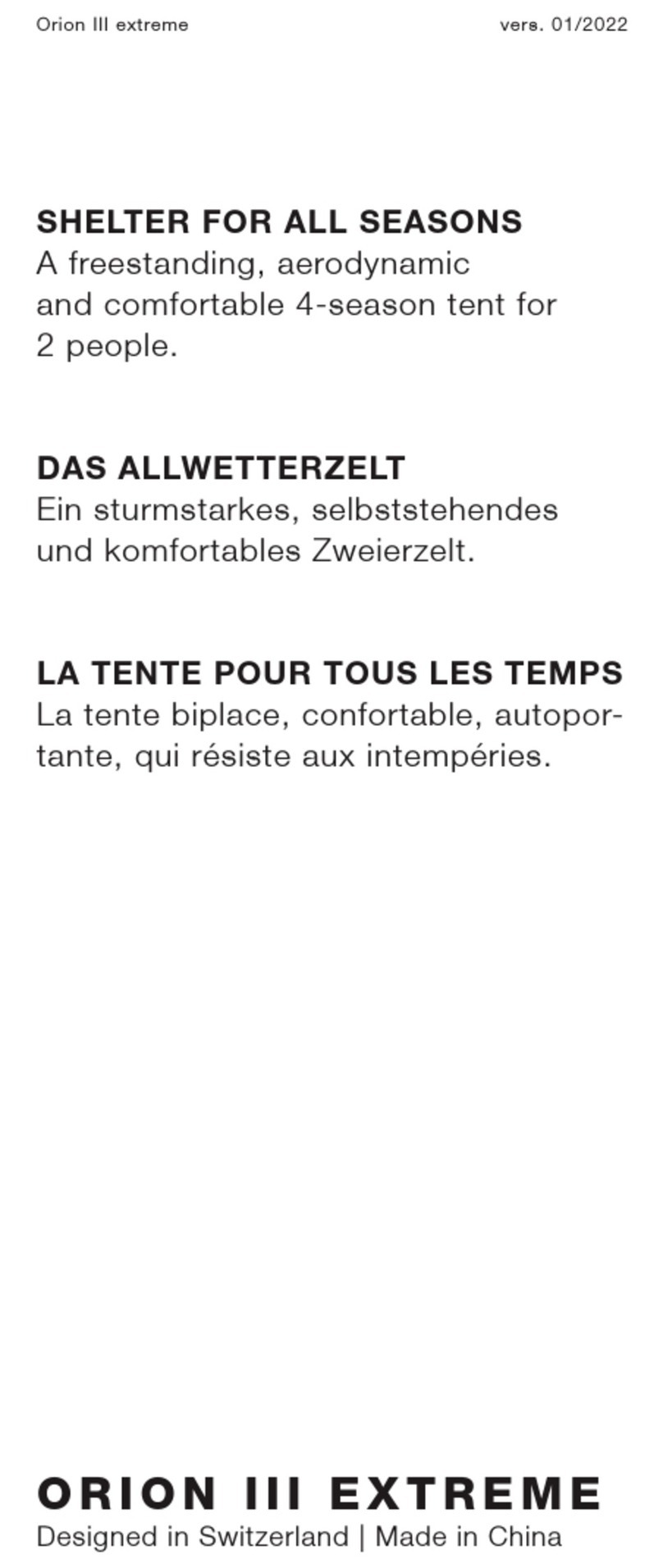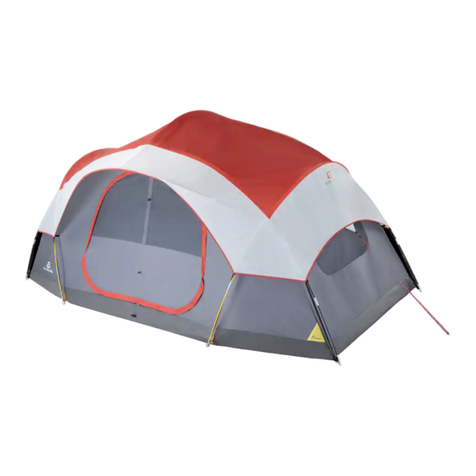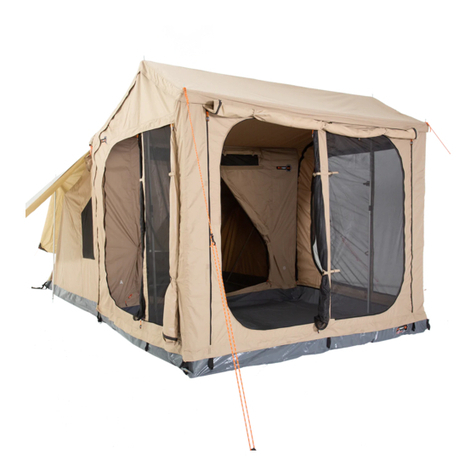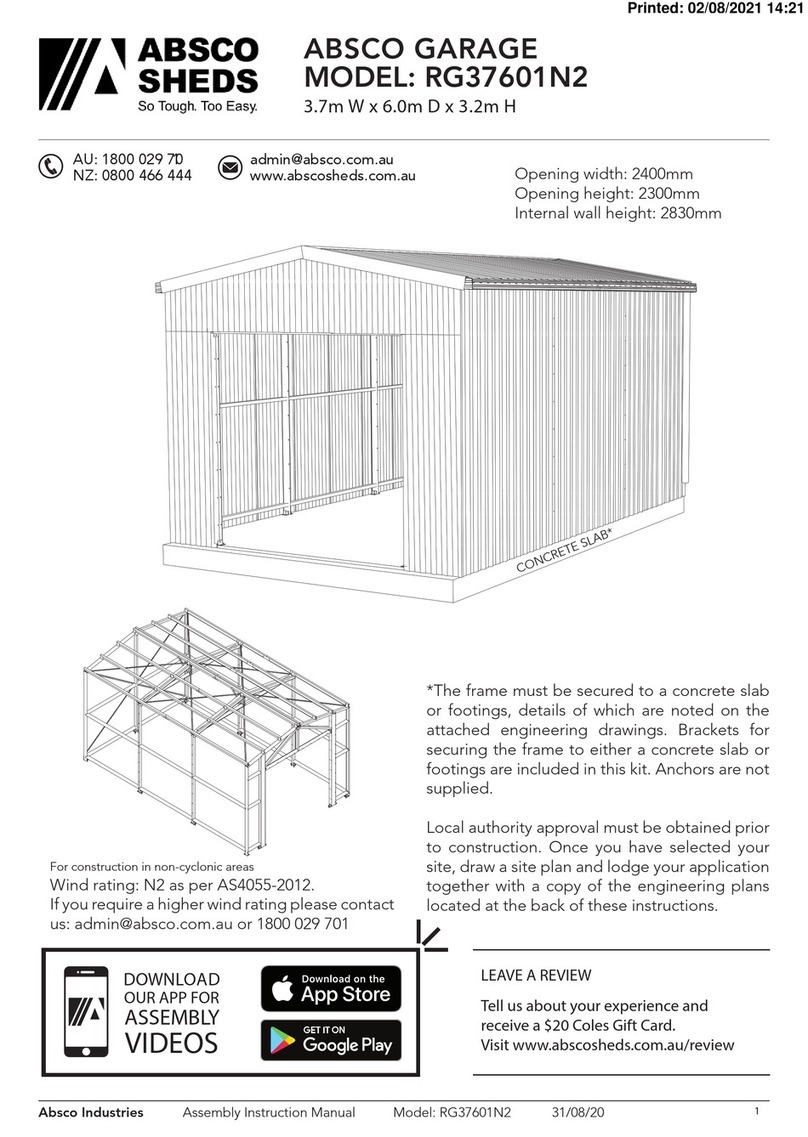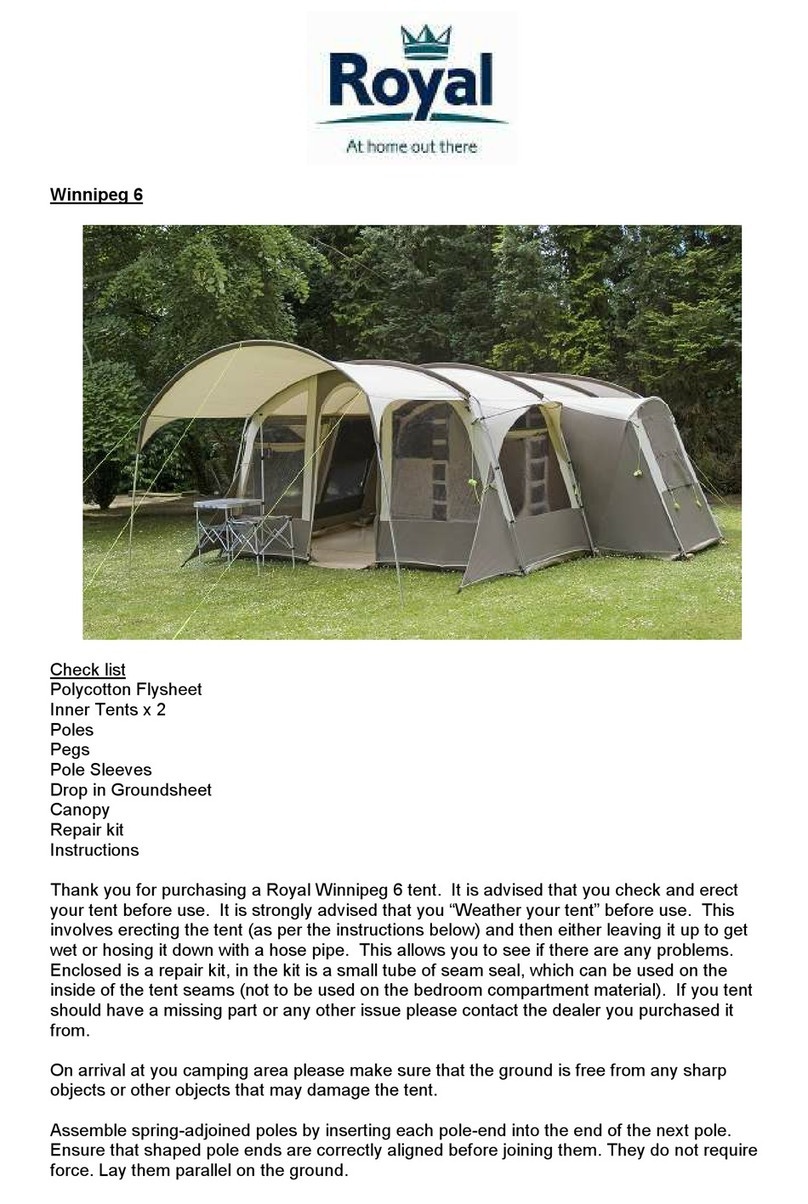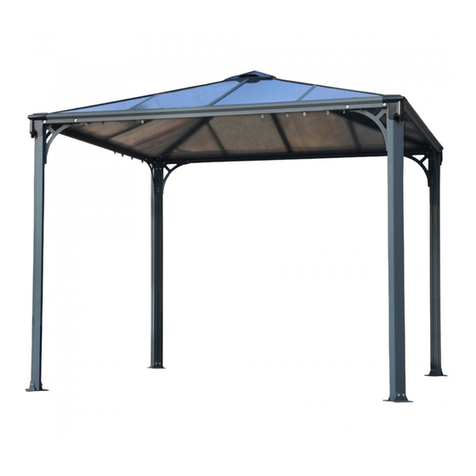Tentandtable.com WEST COAST FRAME TENT 20x40 User manual

Assembly
Instructions
WEST COAST
FRAME TENT
20´x40´

1
10´
10´
10´
4´ to 5´
10´
10´
10´
20 x 40 example
6´-8˝
7´-8˝
WEST COAST TENT OVERVIEW
West Coast designed tents involved less frame work, with no center poles. This tent features stronger
tubes, fewer parts which makes for faster set-up. It’s worth pointing out fewer parts means;
less load, less to assemble, faster set-up and faster strike time. For investment purposes, the frames
are expandable. With the purchase of extra parts you can easily make a second, larger tent.
Take a look here at the basic design.
Corner
Fittings
Stakes
6-Way Crowns
Ridge Crown Spreader
Bars
Hip Rafters
Rafters
Spreader Bars
Side Tees
Poles and Base Plates
716 832-TENT (8368)

STEP 1. CHECK ITEM LIST (20ft. x 40ft.)
Item Illustration (all parts available for replacement) Size Quantity
2
20x40 4
20x40 8
20x40 14
20x40 12
20x40 4
20x40 8
20x40 2
none
20x40 1
none
20x40 12
20x40 76
20x40 12
20x20 1
Hip Rafters
(yellow/red)
Rafters
(green/red)
Spreaders
(white/red)
Leg Poles Base
(black) Plates
Corner Fittings
Side Tee Fittings
6-Way Crowns
8-Way Crowns
Ridge Crowns
(Crowns)
Rope- 12ft.,
w/ loop
‘R’ Pins
Single Head Stakes
(3/4˝x 30˝)
Canopy Top
SKU: BT-38ROPE-12L
SKU: WCF-CORNER
SKU: BT-WCF-LEG-7
Sizes: 6´-8˝(brown)
SKU:
BT-WCF-PLATE
SKU: BT-WCF-RPIN-50
SKU: BT-SH-30-34STK-4
716 832-TENT (8368)
SKU: BT-WCF-SIDET4
SKU: BT-WCF-CROWNR
SKU: BT-WCF-PIPE-WHITE
Size: 9´-4˝(white)
SKU: BT-WCF-PIPE-RED
Size: 14´-4˝(red)
SKU: BT-WCF-POLE21-10
Size: 10´-6˝(green)
SKU: BT-WCF-CROWN6
(see appendix
for more info)

STEP 1. CONTINUED
• When building or assembling anything
above shoulder height, wear a hard hat
• Steel toe boots are recommended
• Inspect the site, look for overhead and
underground obstructions— such as
utilities
• Call your local utility to have utility
lines marked (call 3–5 days ahead)—
call811.com is a good resource—
‘click’ 811 in Your State
• Inspect all ropes and tie lines
• Inspect poles, making sure there are
no bends or breaks
• Replace or repair any items in poor
condition
STEP 2. SAFETY CHECK LIST
Tent Size Quantity
Recommended
Tools
10 x 10 none
10 x 20 none
15 x 15 none
15 x 30 2
20 x 20 none
20 x 30 2
20 x 40 3
20 x 60 4
SKU: WCF-JACK-12
SKU: K-DE-D25980K
WARNING
Tent products are manufactured for use as temporary structure and do not meet structural code, unless
specified. Since weather is unpredictable, the customer must incorporate their own good judgment,
common sense & knowledge of local conditions with the installation instruction guidelines.
The customer is responsible to anticipate weather severity for proper time and method of construction.
‘BEFORE YOU DIG’ (hammer stakes)
By Law you are required to contact your local “Call before you dig” number before you plan to dig.
After calling, your local utility company will mark the location of underground utility lines. Laws
from state to state vary on how far in advance you must call.
Planning ahead and checking with your state’s program is always a smart idea. Failure to obtain a line
location before digging can result in a substantial fine. Please find your local “call before your dig
number” by going to call811.com.
This item is very important in
the process, Frame Tent Jack
(sold separately).
Some West Coast Frame tents require
frame tent jacks—and larger tents
require multiple jacks.
General rules are; work on the long side,
one side at a time, and never place jack
in the middle of a spreader bar.
(set-up and use can be found on internet)
6ft. step ladders
Sledge Hammer
Tape Measure
Stake Driver
(for larger tents)
Estimated
3
716 832-TENT (8368)

4
• Place all tent poles and fittings on
the ground in the location
you have selected for the finished tent
• This layout is illustrates a 20 x 40 tent
— see (appendix A) for your specific
size, layout and pole sizes
1) Start with the crown and its connecting
poles—the drawing shows the correct
postion of the crown—secure these parts
using (2 ) ‘R’ pins per pole
• See (figure A.) for ‘R’ pin usage
• Stand these two end assemblies up, to
connect the ridge parts next
• All connection will be made using
this method—2 pins needed
• Insert a pin, halfway, into the alignment
hole—this will act as stop, for spreader
and rafter bars
• Slide pole (spreader, rafter etc.), onto
the appropriate connector—touch the
alignment pin, as a guide
• The pin holes are now lined up—insert
the second ‘R’ pin, all the way, until it
locks in place
Reminder:
Frame plans and connector positions, for
your tent, appear in the appendix
2) Connect the ridge line next (15x30
or larger), crowns and spreaders
• While standing on a ladder(s) make
all connections from end to end
• If you are short of people, use a tent jack
to hold horizontal poles
3) Lastly, connect all perimeter bars to
the upper spreaders and rafter bars
• When working around the perimeter,
the last connection should be at a
corner, not a side tee
• The frame should now be complete
FIGURE A. ‘R’ PIN AND ALIGNMENT HOLE
STEP 4. RIDGE AND PERIMETER
enlarged
view
Connector Pole
Alignment hole
Pin hole
STEP 3. LAYOUT FRAME
Position parts in the exact location of finished tent
Start with the parts indicated in black
Connect the 5 poles
while crown is still
on ground—
Stand crown on end
to begin, like so
The last connect should be a corner
1
2
3
716 832-TENT (8368)

• Now that the frame portion is complete
and while the frame is still on the
ground, double check the ‘R’-pins
• Also, with plenty of hands on deck, lift
and adjust frame position if needed, at
this point
• Always lift at a side or corner fitting
• While frame is still on the ground, tie
anchor ropes to the frame
• The ropes will be secured to the
tent stakes at the end of the assembly
• One rope per leg pole
• The ropes go under and over, to prevent
them from sliding away from leg—
see (drawing)
Note: this step can occur after the leg
poles have been installed and the frame
is elevated
STEP 6. ANCHOR ROPES
STEP 5. COMPLETED FRAME
• Once again, while frame is still on the
ground, lay down a tarp(s), to protect
canopy—arrange canopy along one of
the long sides of the tent
• Place a ladder(s) next to ridge spreaders
—as many as it takes to easily to pull
canopy over ridge
• One person needed for every 10ft of tent
1) In unison, pull canopy up one side—
‘flapping’ in the beginning, to create lift
—then stop
2) Have most people stay on the ground,
and a couple people on ladders—pull
canopy over the ridge
3) Pull down the other side—’flapping’ for
all three steps
STEP 7. CANOPY
If repositioning is necessary, try to have one person
lift at each fitting, all the way around
Canopy
Ground Tarp
White Rope—
use loop and tie
around connectors
5
21
3
716 832-TENT (8368)

Base
plate
Connect all the base
plates to the leg poles
at the
bottom
of each
leg pole
you’ll find
one hole
• For smaller tents, (10x10, 10x20, 15x15,
20x20) three or four people should be
able to raise the frame and install the
leg poles
• Locate one of the long sides of the
frame—this will be raised first, while the
opposite side remains on the ground
• Important: Lift the entire side of the
frame at once (not one corner)
• Install all the legs on this side—secure
with ‘R’ pins—
• Repeat for opposite side, then install
legs for the remaining two sides
• Double check the canopy corners—pull
them down tight and straight
• Important: tighten spring buckle straps—
for security and to help pull canopy
corners into place
STEP 10. INSTALLING LEGS (smaller tents)
6
Remember, base
plates should be
attached first
Velcro corners together
• After canopy is pulled over frame and
and corners are pulled into position,
velcro corner seams together, loosely—
tighten after legs are installed
• The canopy should be attached to the
frame, before legs are connected—
secure some of the spring buckle straps,
to keep canopy in place—
start near corners and center fittings
• Spring buckle straps are located on the
underside of canopy
• Secure the remaining straps after legs
are installed on one side and secure—
it’s easier at this height—
Final tightening happens after legs are
installed (step 10)
STEP 8. CANOPY CORNERS
Under canopy
there will be
several Spring
Buckle Straps
Start with one at each
corner and center fittings
• Before the tent is raised, prepare the
leg poles
• Place poles on top of base plate and
secure with ‘R’ pins
• Do this for all the leg poles
STEP 9. BASE PLATES
716 832-TENT (8368)

• For larger tents, (15x30 and larger)
frame tent jacks should be used to
raise the frame and install the leg poles
• Locate one of the long sides of the
frame—this will be raised first, while the
opposite side remains on the ground
• Important: Lift the entire side of the
frame at once (not one corner)—crank
jacks in unison
General rules are; work on the long side,
one side at a time, and never place jack in
the middle of a spreader bar
• Install all the legs on this side—secure
with ‘R’ pins
• Repeat for opposite side, then install
legs for the remaining two sides
• Important: tighten spring buckle straps—
for security and to help pull canopy
corners into place
Double check leg poles—making sure
each pole is straight and lined up correctly,
while tent jacks are still handy
• Once the tent is vertical and all the leg
poles are attached, begin the process of
staking the tent—with plenty of hands
on deck, lift and adjust tent position if
needed, first
• Measure 4 ft. out from each leg pole and
place a stake in the ground
• Stakes should look uniform, around the
tent—and 6 inches above ground
see (figure B)
• Stakes should then be hand hammered
or for larger installs, use a stake driver
STEP 11. STAKE LINE
Leave 6 inches showing
Correct Incorrect
STEP 10. INSTALLING LEGS (15x30 and larger tents)
• Ground stakes should be hammered
in vertical, not angled
(sledge hammer required)
• Complete the hammering process by
driving the stakes in and leaving
6 inches showing
• Connection of ropes to ground stakes,
can be made with a few different secure
knots (see figure C, page 8) for one of
the more commonly used knots
FIGURE B. HAMMERING STAKES
Remember, base
plates should be
attached first
6˝
Stake Line
Ground
Stakes
Approx. 4 to 5ft.
from leg poles
4 ft.
4 ft.
7
20 x 40 example
716 832-TENT (8368)

3.) 4.)
1.)
2.)
• A commonly used knot for securing
a rope to stake is the clove-hitch
1.) Make two loops
2.) Cross loops by placing second loop
over the first
3.) Place the combined loops over stake
Option: loops can be form directly
on stake
4.) Pull on both ends to tighten rope
Note: outward force tightens and
inward force loosens the knot—when
making adjustments
5.) Excess line should be pulled half-
way up the rope and tied off
FIGURE C. CLOVE-HITCH KNOT
Anchor Ropes
should be tight
One rope per
leg pole
Position corner straps
straight off corner pole
• As the assembly nears completion it
is time to tighten all ropes/ratchet straps
• Keep an eye any lean that might be caused
by the tightening process
• Go around the tent, make adjustments
for any leg pole and tent lean
• Smaller tents use ropes to secure the tent
to the stakes— see (figure C)
• Finally, secure any remaining spring
buckle straps, under the canopy, that
were not secured in step 8
STEP 12. SECURING ROPES
8
FINISHED TENT (20x40)
10´
10´
10´
10´
10´
10´ 6´-8˝
716 832-TENT (8368)

9
716 832-TENT (8368)
D. E.
WIND AND RAIN – IMPORTANT INFORMATION:
WIND!
Wind can cause the ratchet assemblies and stakes to loosen, or cause the poles to sink or shift through
constant movement and vibration — the tension of the tent will be negatively altered.
Follow these steps to provide extra security and safety during windy conditions:
• Very important, do routine maintenance checks — be sure to check proper tension regarding the
ratchet assemblies, throughout the day/event. This is critical, if your tent must stay up, in moderate
windy conditions.
• In the case of strong winds, remove any sidewalls. This will allow the wind to pass through the tent,
diminishing major upward pressure on the tent top.
• Additional security can be achieved by adding additional stakes and ropes/straps to corners—
and to the ‘wind side’ of the tent.
• When anticipating windy conditions, perform a soil test to determine proper staking:
1.) drive a large steel stake approx. 20 in. into soil, vertically
2.) measure the distance from the ground to the top of stake
3.) with a 16lb. sledge hammer, strike stake with an average blow (don’t over hit)
4.) measure the movement/hold strength: (0.2in./2500lbs) (0.3–.5in./1600lbs) (0.6–1.5in./800lbs)
(1.6–3in./400lbs) (3–6in./200lbs) (> 6in./100lbs) Double or triple staking might be necessary,
10in. behind primary stake (see figure D). [search web for: tent.IFAI tent staking handbook for detailed information]
• When SEVERE WEATHER is approaching, the TENT SHOULD BE EVACUATED— and TAKEN DOWN!
• Proper Setup Note:
Make sure all poles are vertical and form a ‘squared up’ rectangle.
30 wide and larger: use a Mason’s string — attach at the base of one corner pole, go around all
4 corners to form a box. Tighten the string — then align all side poles by having them touch the string.
Proceed by bringing these poles vertical and applying proper tension to each strap — start at the
middle of one of the short sides (2 people, same speed) and work around the tent, ending with
the middle of the other short side (see figure E). The person on the ‘wind side’ goes first.
Lastly, re-check the corner poles.
RAIN!
When rainwater collects on the tent canopy it causes 'ponding'— occurring in heavy weather conditions.
If the tent is not tensioned correctly, this issue will be made worse. Additional weight from the water
will cause the tent to sag — this may cause the poles and base plates to sink into the soil. In addition,
water saturated soil will cause the stakes to lose their holding power. When you combine loosened
stakes, added weight on the canopy and reduced tension on ratchet assemblies, the structure becomes a
safety hazard. IT IS THE TENT OWNERS RESPONSIBILITY TO ASSURE THE SAFETY OF ALL INVOLVED.
secondary
stake
primary
stake
person 1
person 2
start
string line
(20 x 40 tent)

• Fold to center • Fold those halves
to center
• Roll tightly
• Fold one
side over
Folding Canopy:
• Release handle, crank until slot is
pointing up
• Close handle
• Pass strap underneath and through
the slot (as shown)
• While holding the whole strap
assembly attach both ends
(eg. tent to stake)
• Remove slack, before tightening
• Push ‘release’— lift handle and
tighten ratchet
• Roll-up any excess strap, put under
handle
• Close handle
10
1.) Undo ratchet strap assemblies/untie ropes
2.) Unfasten spring buckle straps, under canopy
3.) Remove leg poles, on one long side
(use tent jacks for larger tents)
4.) Remove adjacent center, leg poles, on short sides
5.) Lower first long side to the ground
6.) Repeat, remove leg poles, on remaining
long side
7.) Lower rest of frame to ground
8.) Lay tarp next to a long side of frame
9.) Loosen canopy corners
10.) Slowly slide canopy off frame—
flapping, in unison, as you go
10.) Fold and bag canopy (dry canopy)
11.) Disassemble poles and connectors
12.) Remove ground stakes
STRIKE PROCEDURE (basically, reverse order from assembly)
USING RATCHET STRAPS
Release
(push, to lift handle
and to remove strap,
during disassembly)
Handle
Axle/Slot
(Ratchet Buckle Components)
716 832-TENT (8368)

Appendix A.
20X40
TENT Leg pole and base
plate positions
Refer to (page 1) for basic
spreader and rafter layout
corner
fitting
• Plans— showing tent sizes, leg pole
and connector quantity and locations
9´-4˝(W)
9´-4˝(W) 10´-6˝(G)
10´-6˝(G)
14´-4˝(R)
ridge crown 6-way crown
(14) spreaders-w (4) hip rafters-r (8) rafters-g
side tee
This manual suits for next models
8
Table of contents
Other Tentandtable.com Tent manuals
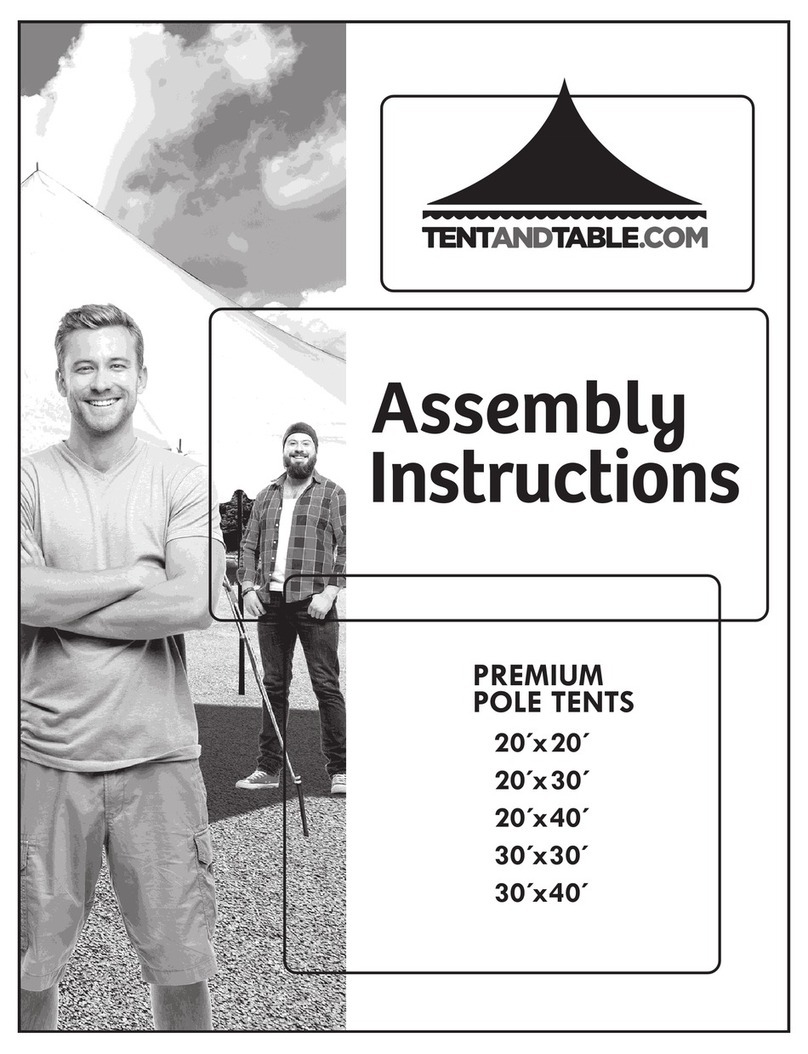
Tentandtable.com
Tentandtable.com Premium Pole Tent 20' x 20' User manual
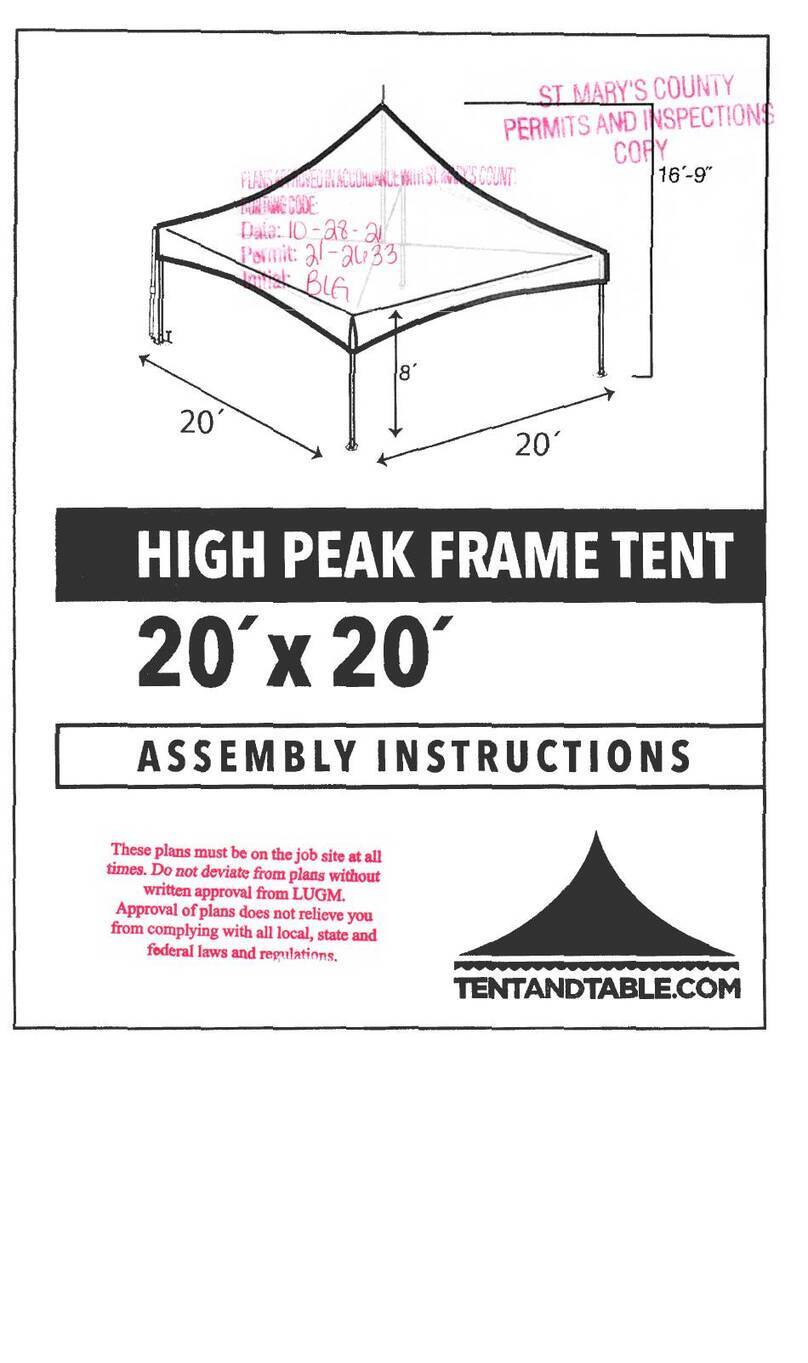
Tentandtable.com
Tentandtable.com HIGH PEAK FRAME TENT 20 x 20 User manual
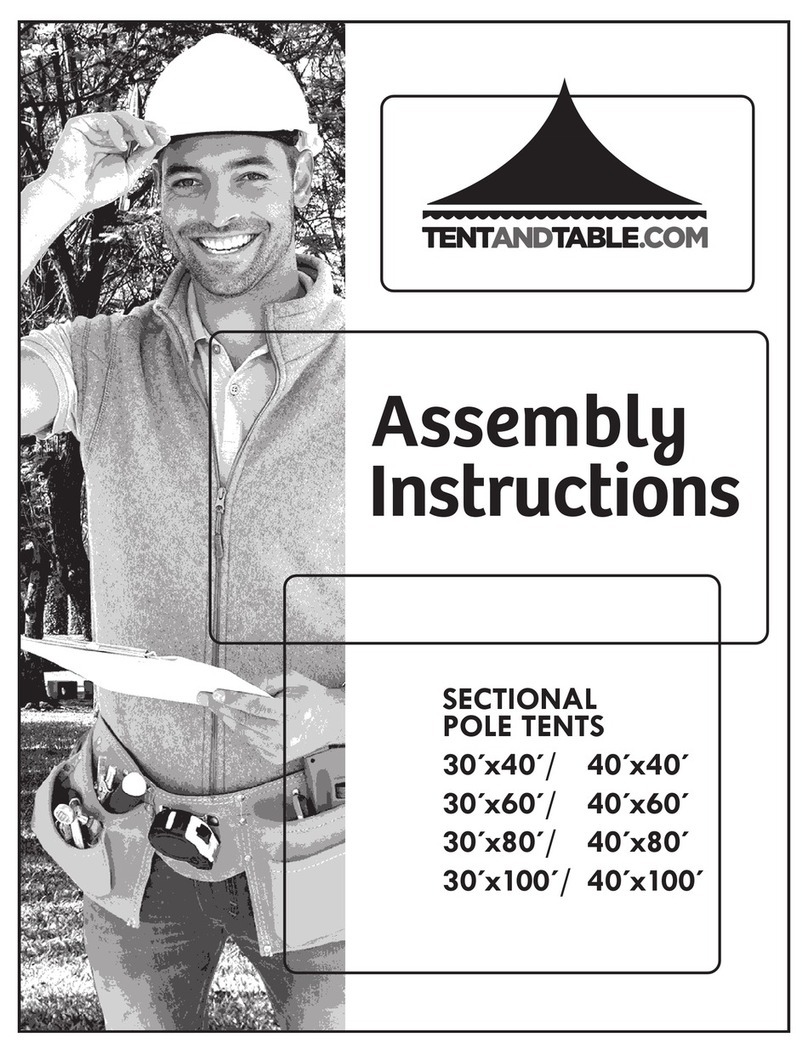
Tentandtable.com
Tentandtable.com BT-PP48WT4P User manual

Tentandtable.com
Tentandtable.com 40 Hex User manual
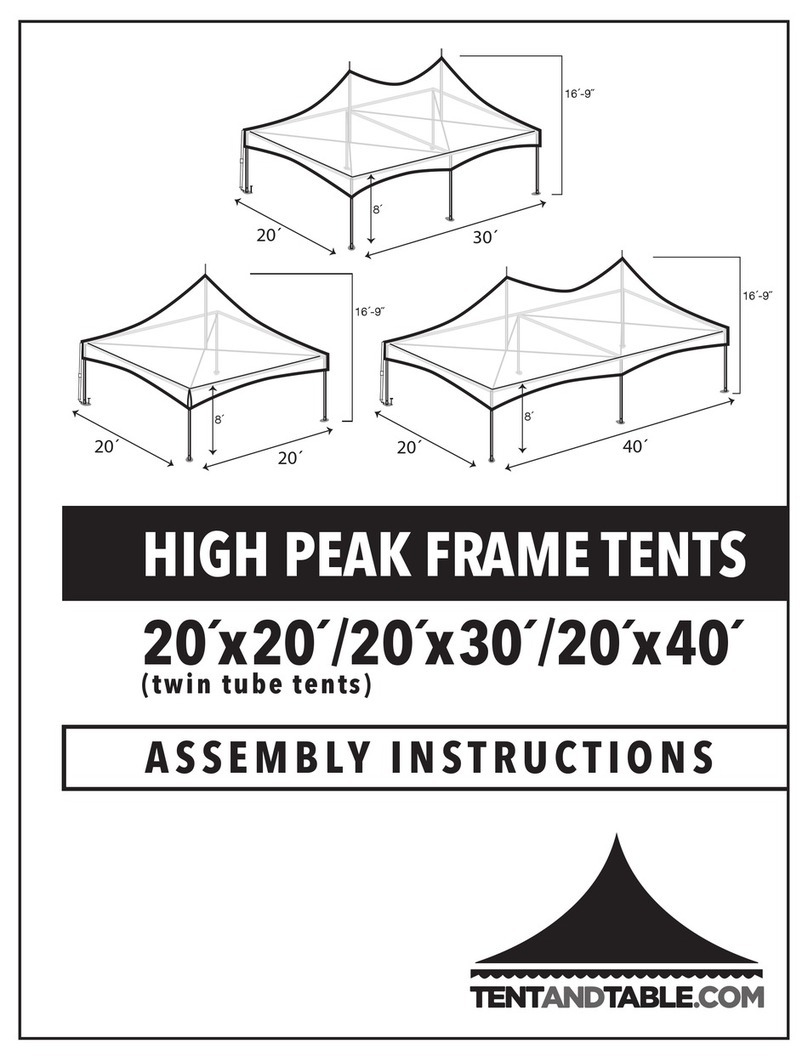
Tentandtable.com
Tentandtable.com 716 832-TENT User manual
